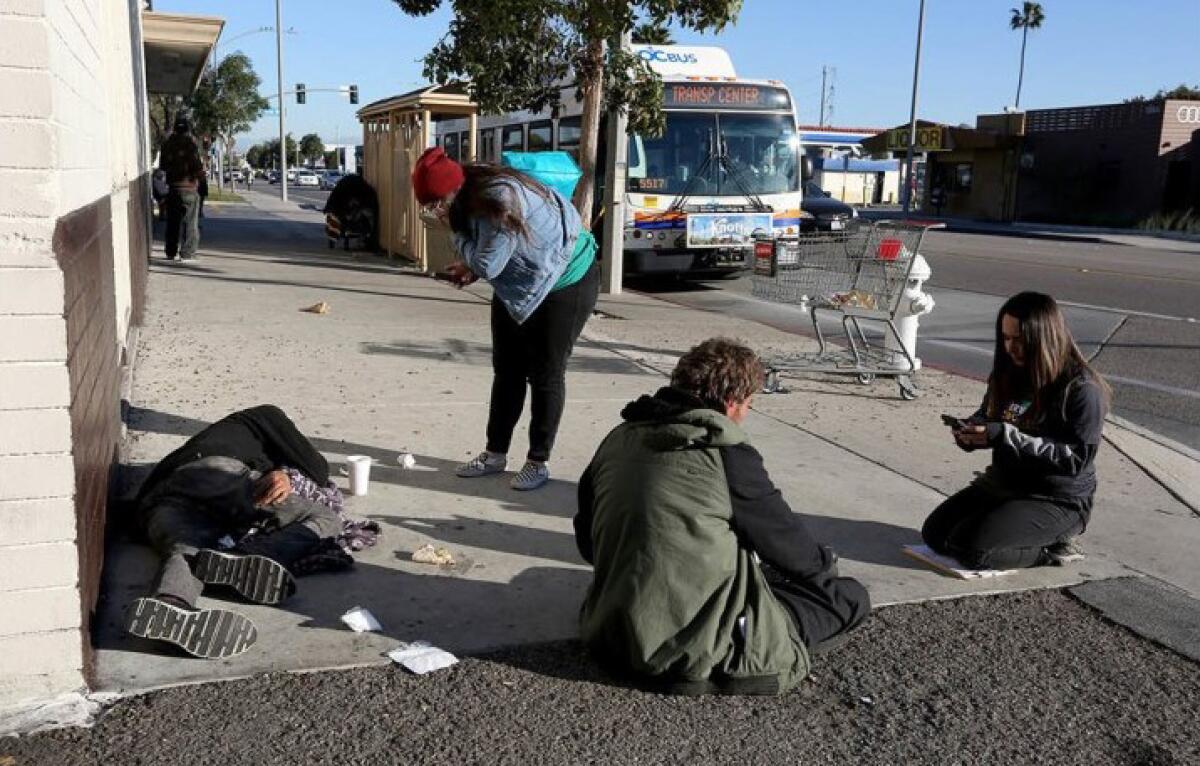Homelessness in Orange County is on the rise, according to new report

Orange Countyâs homeless population has increased by 28% from two years ago and remains higher than what it was before the pandemic.
The new findings come by way of Point in Time, a federally mandated biennial count carried out in late January by volunteers.
According to the report, which was released on Wednesday, there are 7,322 homeless people living on the countyâs streets or in shelters. Thatâs about 1,600 more than were tallied in 2022.
The latest figures represent a 7% increase in pre-pandemic homelessness from 2019, when the first Point in Time count was conducted.
More than half of all homeless people are living on the streets, and nearly half of unhoused adults experienced homelessness for the first time in the past 12 months.
âThe 2024 Point in Time Count shows that the homelessness crisis continues to grow in Orange County with a majority of these neighbors stuck in the shelter system without permanent housing to move into,â said Orange County Supervisor Katrina Foley in a Wednesday statement. âWe must re-double our efforts to build permanent supportive and affordable housing, especially for seniors, with renewed urgency.â
Since 2018, the county has added 1,364 affordable and supportive housing units, with 1,673 more units under construction or securing their funding for future development.
The federal Department of Housing and Urban Development requires the Point in Time counts, which play a key role in determining state and federal funding to address homelessness.
Foley, as OC Housing Finance Trust Chair, traveled to Washington, D.C., to push for the closing of an annual $17-million federal funding gap for affordable housing in the county.
The survey also found that most of the countyâs homeless population is concentrated in north and central O.C.
Santa Ana has 871 unsheltered people living on its streets, more than in all of south county. As a majority Latino city, Santa Ana has long taken the stance that the issue of homelessness in the county falls on its shoulders.
The statistic jumped out to Deyanira Nevarez Martinez, an urban and regional planning professor at Michigan State University.
âYou have the longstanding strategy that other O.C. cities have used of taking their unhoused populations to Santa Ana,â said Nevarez Martinez. âFinally, especially among Latinx folks, but not exclusively, there are many barriers with immigrants, both undocumented and undocumented, attempting to gain access to services. This creates a perfect storm for the city.â
Last year, Nevarez Martinez authored âAnywhere But Here,â a study of an unnamed O.C. beach townâs response to homelessness. During her research, a code enforcement officer claimed that if the beach townâs city council members could pay to have their unhoused population hauled out, they would.
Point in Time Count volunteers did not find homeless people in Villa Park, the only city in the county without any.
According to the report, 42% of unsheltered people counted in the county were white, followed by Latinos at 36%.
âThere are likely an increased number of Latinx folks who are experiencing doubled-up homelessness, like we see in Los Angeles,â said Nevarez Martinez. âThat could point to the fact that the strategies Latinx have been using to deal with the affordability crisis, such as overcrowding, are no longer working.â
Another key finding in the survey showed that about half of adult unhoused people reported a substance use disorder as a disabling condition.
Michael Sean Wright, director of field medicine at Lestonnac Free Clinics and founder of nonprofit Wound Walk, approaches homeless outreach from a medical perspective.
âWe donât have enough detox beds,â he said. âWe donât have enough nursing beds for our folks who are chronically homeless. The survey tells us that people want services and access to healthcare needs to be addressed. Being outside shouldnât be a death sentence as you wait for housing.â
Last year, 511 homeless people died in the county, according to Orange County Coroner statistics.
All the latest on Orange County from Orange County.
Get our free TimesOC newsletter.
You may occasionally receive promotional content from the Daily Pilot.




